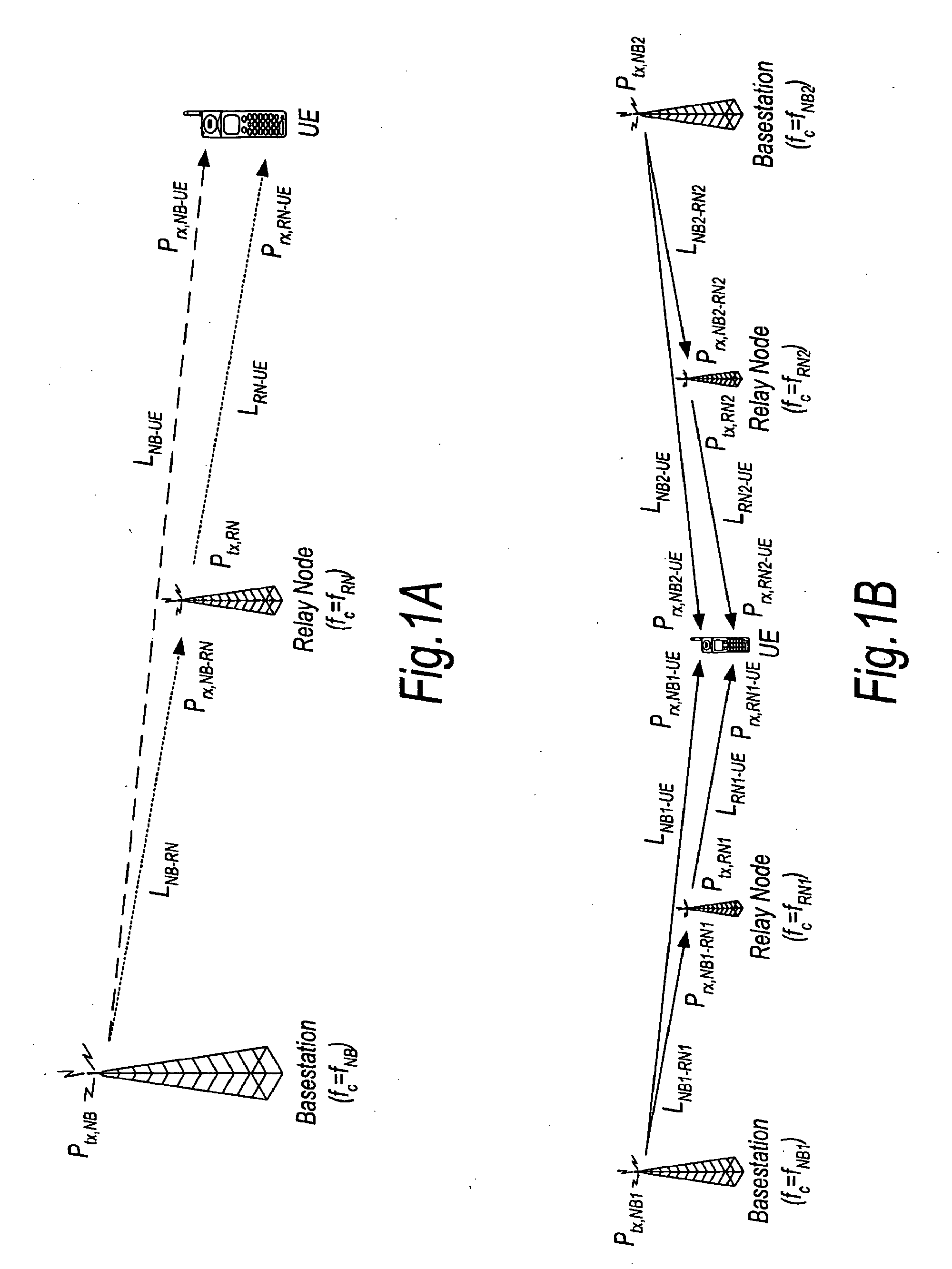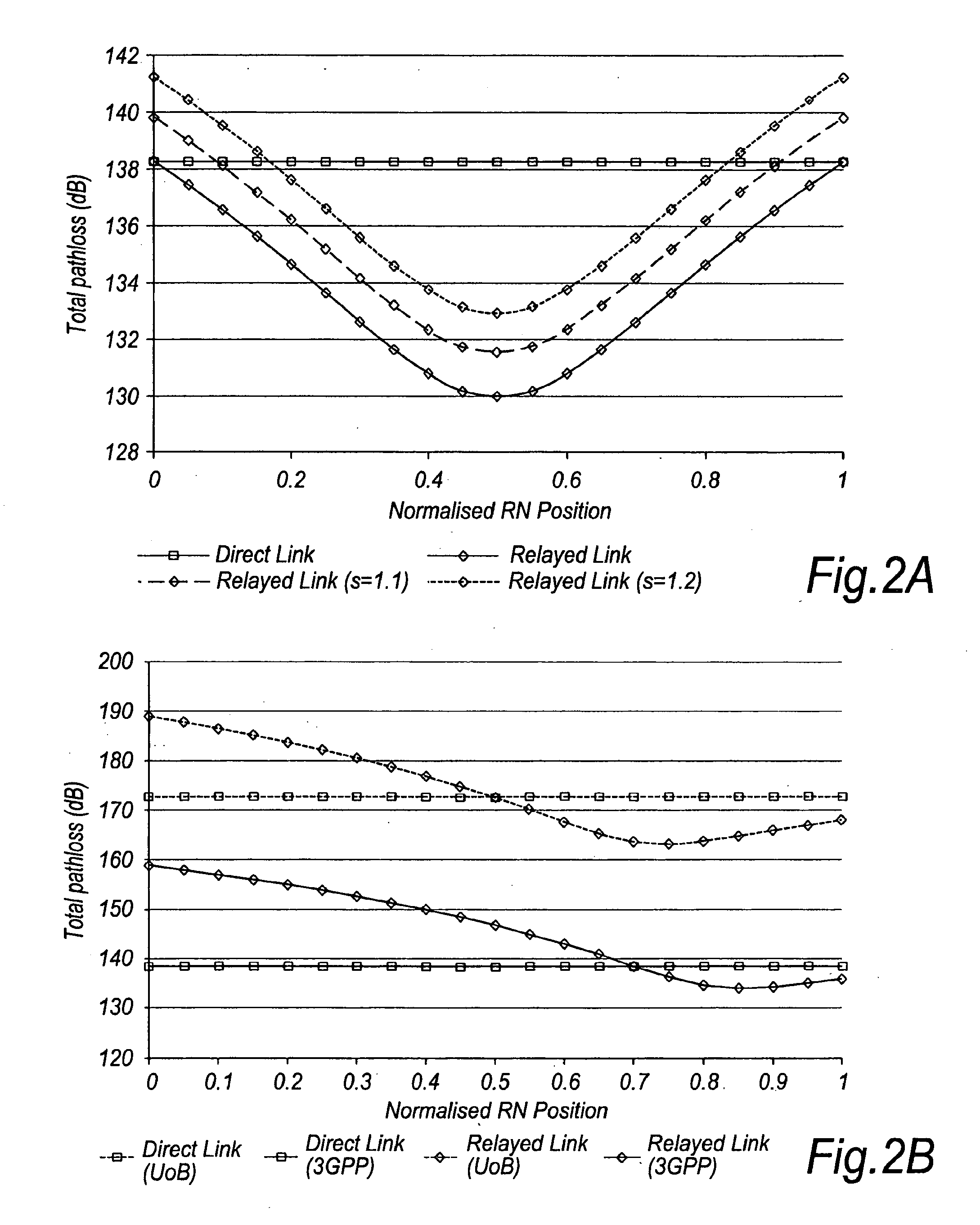Communication System
- Summary
- Abstract
- Description
- Claims
- Application Information
AI Technical Summary
Benefits of technology
Problems solved by technology
Method used
Image
Examples
second embodiment
[0363]The algorithm described above will manage the case of the propagation loss varying between the RN and NB and the case of the NB modifying its target RSS or SINR. In order to handle the case of the propagation loss varying between the UE and RN and the case that both the target in the NB and the propagation loss between the RN and NB varies, such that no request for change in RN transmit power is generated, an algorithm which implements the fourth aspect of the present invention operates periodically as discussed below (FIG. 13)
[0364]The details of the algorithm are summarised as follows:
Uplink Algorithm 3: Part 2Trigger: Periodically executed in NBAlgorithm InputRequired byOriginSINR at NBNBKnown at NBSINR at RNNBSignalled from RNDestination & SignallingAlgorithm OutputDerivationRequirementChange in UE transmit powerRelativeSignalled to UE via RNchangeBlock on RN power increaseTrue / falsePart 1 of the algorithmtest
[0365]This algorithm is executed periodically in addition to the...
third embodiment
[0413]An example of an algorithm which implements the sixth aspect of the present invention will now be described with reference to FIG. 20, in which the source apparatus comprises a user equipment (UE), the intermediate apparatus comprises a relay node (RN) and the destination apparatus comprises a base station (NB). The present embodiment seeks to attain or maintain a balance between the QoS experienced on the UL communication links (UE-RN and RN-NB) by adjusting the bandwidth allocated to the RN-UE communication link.
[0414]The details of the algorithm are summarised as follows:
Uplink Algorithm 1A&B: Part 1 (Centralised with QoS derived at NB)Trigger: Periodically executed in NBAlgorithm InputRequired byOriginRequest for change inRNChange derived in NB andBW allocation at RNprocessed by RNBlock in increase inRNBlock is set / cleared inBW allocation at RNpart 2 of the algorithmDestination & SignallingAlgorithm OutputDerivationRequirementChange in RN BW allocationRelativeRelative chan...
fourth embodiment
[0416]The algorithm described above will manage the case of the propagation loss varying between the RN and NB and the case of the NB modifying its target QoS. In order to handle the case of the propagation loss varying between the UE and RN and the case that both the target in the NB and the propagation loss between the RN and NB varies, such that no request for change in RN bandwidth allocation is generated, an algorithm which implements the sixth aspect of the present invention operates periodically as discussed below with reference to FIG. 21.
[0417]The details of the algorithm according to the fourth embodiment are summarised as follows:
Uplink Algorithm 1A: Part 2 (Centralised with RN QoS derived at RN)Trigger: Periodically executed in NBAlgorithm InputRequired byOriginQoS at NBNBKnown at NBQoS at RNNBSignalled from RNDestination & SignallingAlgorithm OutputDerivationRequirementChange in UE BW allocationRelativeSignalled to UE via RNchangeBlock on RN BW allocationTrue / falsePart ...
PUM
 Login to View More
Login to View More Abstract
Description
Claims
Application Information
 Login to View More
Login to View More - R&D
- Intellectual Property
- Life Sciences
- Materials
- Tech Scout
- Unparalleled Data Quality
- Higher Quality Content
- 60% Fewer Hallucinations
Browse by: Latest US Patents, China's latest patents, Technical Efficacy Thesaurus, Application Domain, Technology Topic, Popular Technical Reports.
© 2025 PatSnap. All rights reserved.Legal|Privacy policy|Modern Slavery Act Transparency Statement|Sitemap|About US| Contact US: help@patsnap.com



